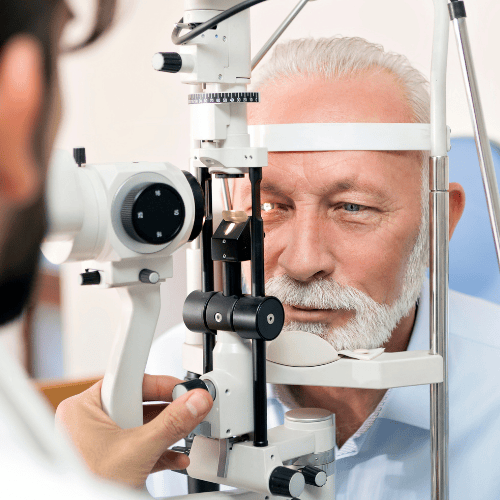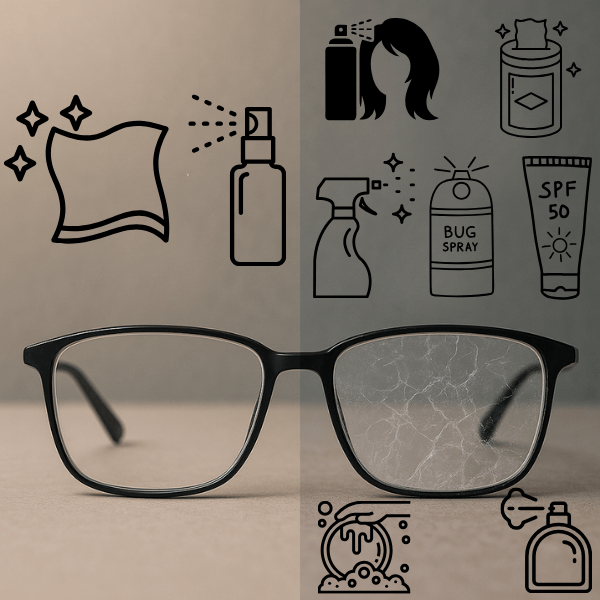Nutrition And Macular Degeneration
Introduction
As February is macular degeneration awareness month, we would like to revise a previous article from our blog about the relationship between this common eye disease and dietary nutrition.

Understanding Macular Degeneration
Age-related macular degeneration (AMD) is an eye disease associated with aging that affects the macula, the part of the retina responsible for providing fine, detailed vision. “Dry” AMD is the more common form of the disease and often causes a gradual blurring of central vision. “Wet” AMD is the more advanced form of the disease and can cause sudden and severe changes in central vision. AMD is a major cause of vision loss in Canada and is the leading cause of blindness in patients over the age of 65.
Preventative Measures
Factors that reduce the risk for vision loss from AMD: maintaining a healthy lifestyle including regular exercise, a diet high in green leafy vegetables, avoiding smoking, and wearing sunglasses outdoors to protect your eyes from the effects of UV radiation.
The Role of Nutrition in Preventing AMD
Let’s look at the nutrition factors in more detail. Studies have shown that certain nutrients, when consumed regularly, play a large part in reducing the risk of developing vision loss from AMD.
The Age-Related Eye Disease Study (AREDS) is a clinical study that was sponsored by the National Eye Institute; the results were released in 2001. The purpose of the study was to determine if certain nutrients known as “antioxidants” and/or zinc provided any protective effect against the development of age-related macular degeneration (AMD). Taking the AREDS formulation reduced the rate of advanced AMD in people at high risk by about 25% over a 6 year period. It is important to note that there was no proven benefit in taking the formulation for patients with either no signs or very early signs of macular degeneration.
Key Nutrients and Minerals
The specific daily amounts of each nutrient and mineral studied in the AREDS study are as follows:
- 500 mg vitamin C. Vitamin C is an antioxidant also known as ascorbic acid. The human body does not make vitamin C naturally, so we rely on external sources to get it. Studies have shown that it can help to prevent retinal damage as well as cataracts and cardiovascular disease. Dietary sources of vitamin C include yellow sweet peppers, citrus fruits, brussel sprouts, kiwi, strawberries, and cantaloupe. While there is little risk in taking high doses of vitamin C, some patients may experience diarrhea.
- 400 IU vitamin E. Vitamin E is a powerful antioxidant that helps to maintain a healthy circulatory system and plays a significant role in the function of the immune system. Good dietary sources include sunflower seeds, oils, asparagus, green leafy vegetables, fortified grain products, wheat germ, almonds, and other mixed nuts. Because vitamin E is fat-soluble, it can have significant side effects if taken in excess (such as increased risk of bleeding or hemorrhaging, especially for patients already taking blood thinners). The National Eye Institute has deemed 400 IU vitamin E per day to be a safe dose, but patients should always consult with their medical doctor before starting higher doses of vitamin E, especially if they take blood thinners or have a history of heart disease.
- 15 mg beta-carotene (equivalent to 25,000 IU vitamin A). Beta-carotene is a carotenoid and is a precursor of vitamin A which helps to prevent dry eye, cataract, and retinal disease. Carotenoids are what gives natural pigmentation to many of the foods that contain it (including apricots, cantaloupe, carrots, spinach, sweet potatoes, and chili peppers); they also serve as a filter for ultraviolet light and protect the retina from UV radiation and oxygen. We depend on external sources to get carotenoids because the body does not make them. High doses of beta-carotene can cause reversible yellowing of the skin and are associated with an increased risk of lung cancer. Patients who smoke are typically prescribed an AREDS formulation that does not contain beta-carotene.
- 80 mg zinc (zinc oxide). Zinc is a trace element that is known to boost the immune system and is also an antioxidant. It has been shown to reduce the progression of AMD both on its own and in combination with other antioxidants. Zinc is found in high-protein food sources such as beef, lamb, pork, peanut butter, and legumes. Taken at higher doses, it has been associated with gastrointestinal upset and urinary tract infections. Studies are underway to determine if lower doses of zinc can reduce patient symptoms of GI upset while still reducing risk of progression to advanced AMD.
- 2 mg copper (cupric oxide). Copper was added to the AREDS formulation because higher doses of zinc are associated with copper deficiency. Copper deficiency can lead to anemia.
AREDS2: An Updated Study
A follow-up study was started in 2008, and the results released in 2013, to determine whether additional nutrients found in high concentrations within the macula were beneficial for those with AMD. Lutein and Zeaxanthin are micronutrients found within many fruits and vegetables. In addition to the vitamins studied in the original AREDS research, the conclusion was that a formula of 10mg of Lutein and 2 mg of Zeaxanthin, AND removal of beta-carotene was more effective at reducing the risk of vision loss from advanced AMD than the AREDS vitamins alone. The study also concluded that reducing the amount of zinc had no impact on the effectiveness of the formula. Beta-carotene was removed from the AREDS 2 study due to its correlation with a higher incidence of lung cancer in smokers or previous smokers.
It's not likely that you will be able to replace these high doses of anti-oxidant vitamins found in AREDS 2 with dietary modifications alone. Click here to read more
Consultation and Personalized Advice
There are also some considerations before adding regular doses of zinc to your diet. Before taking these high levels of vitamins and minerals, you should talk with your MVO eye doctor. about the risk of developing advanced AMD and whether taking either AREDS or AREDS 2 is right for you.
AGE-RELATED MACULAR DEGENERATION: FAQS
As February is Age-related macular degeneration awareness month, we are including the most common questions answered by our optometrists about this common eye condition.
What is Age-related macular degeneration (AMD)?
AMD is the leading cause of blindness in North America for those over 55 years of age. It affects the part of your eye responsible for sharp, detailed vision known as the “macula” – a part of the retina containing specialized light-sensitive cells. You use the macula for driving, reading, recognizing faces, and watching tv.
What are the symptoms of AMD?
Most of the time there are no symptoms in the earliest stages of AMD. Small visible changes to the macula are best seen by your MVO optometrist during a routine eye exam. This may prompt further testing to confirm the diagnosis.
An onset of slightly blurred or distorted vision in one or both eyes may occur as the condition progresses. There may be little change over several years, or relatively rapid progression leading to blindness.
What factors increase my risk for getting age-related macular degeneration?
A family history, if you have heart disease, arteriosclerosis or high blood pressure, environmental factors like a poor diet and whether you smoke, as well as long term UV exposure from being outdoors without sunglasses are all risk factors for AMD. Of course, increasing age also plays a significant role.
Is there a treatment for age-related macular degeneration?
The milder (“dry”) form of AMD is treated with vitamins, UV protection and addressing the health conditions and lifestyle factors mentioned above. Dry AMD represents about 90% of all cases. “Wet” AMD is less common but typically more rapidly progressive. It’s treated with an injection into the eye which is administered every few weeks until it stabilizes.
What else can I do to reduce my risk for getting age-related macular degeneration?
Genetic testing is now available at MVO to help determine what vitamins might be most effective, as well as your inherited risk for rapid progression. Early detection is key, and seeing your MVO optometrist annually will be your best opportunity for diagnosing AMD and other eye conditions so that treatment, if indicated, may be started.











